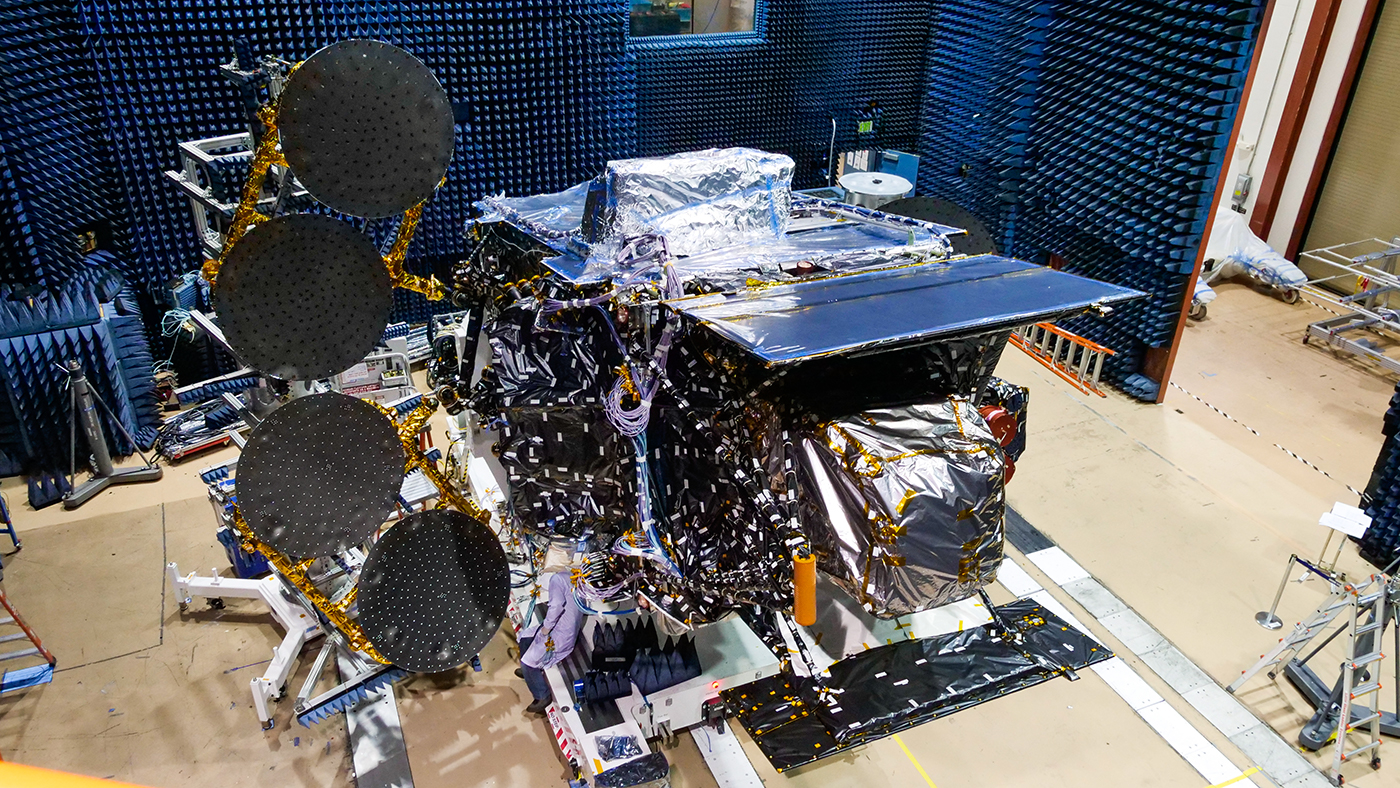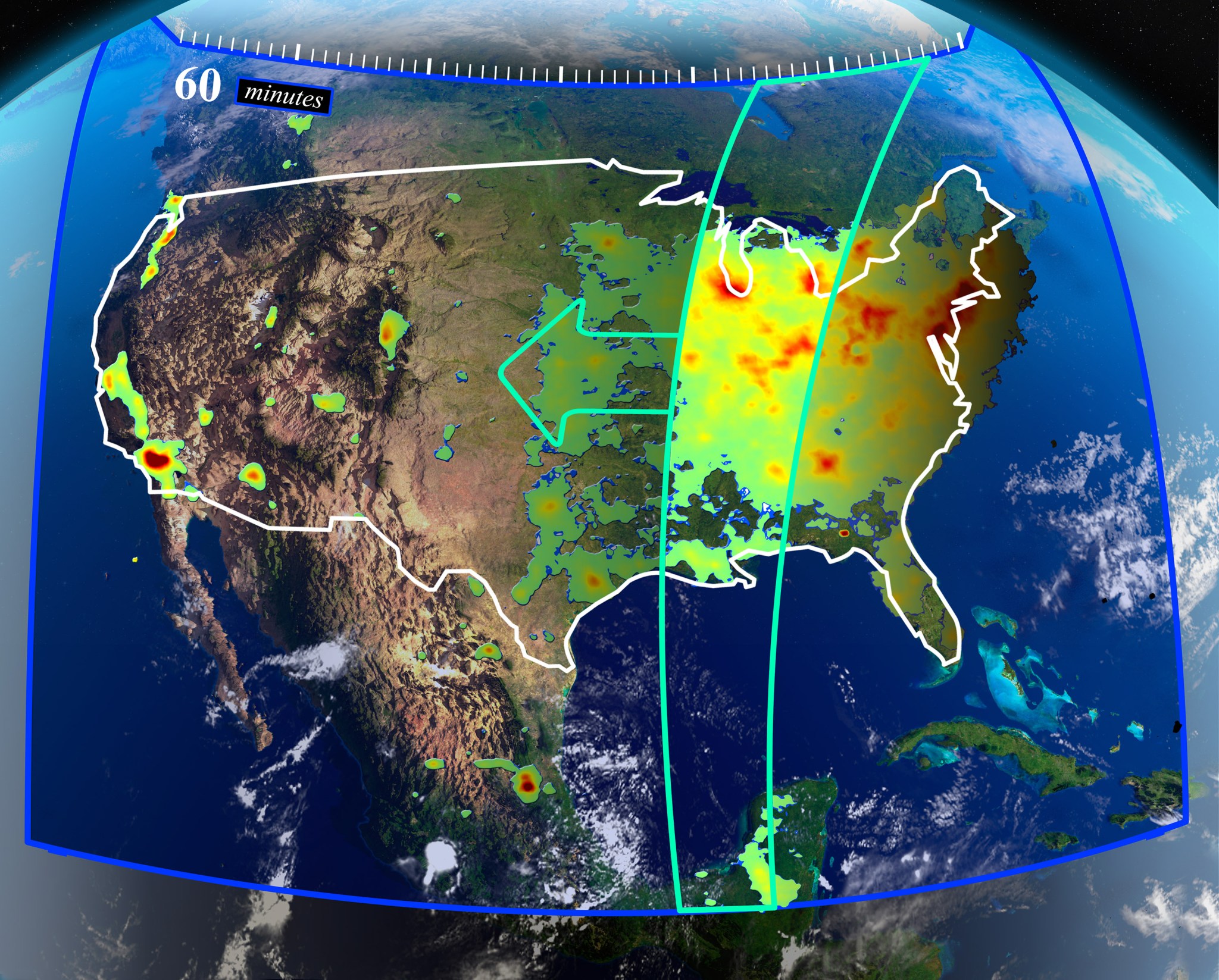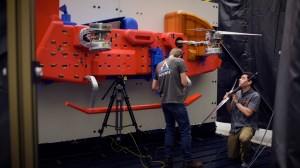NASA is preparing for the launch of an instrument that will provide new insight into air quality in North America, observing air pollution from space more frequently and in greater detail than previous space-based instruments. It will also reveal disparities in pollution exposure.
The Tropospheric Emissions Monitoring of Pollution instrument (TEMPO) is scheduled for an early April launch from Cape Canaveral Space Force Station. TEMPO is mounted on a commercial communications satellite and will fly in an orbit that allows for hourly daytime observations of air quality in North America. It will observe pollutants down to a resolution of 4 square miles (10 square kilometers) and across an area that stretches from the Atlantic Ocean to the Pacific and from central Canada to Mexico City. The dishwasher-sized instrument was built by Ball Aerospace and will fly on the Maxar-built Intelsat 40E satellite.
While efforts over the past 30 years to clean the dirty air that spews from smokestacks and tailpipes have been successful in improving air quality in the U.S., more than 40% of Americans still live and breathe in areas with episodes of poor air quality.
TEMPO will primarily observe three main pollutants: nitrogen dioxide, formaldehyde, and ozone. Nitrogen dioxide is a noxious gas released from the burning of fuel that can cause difficulty breathing and exacerbate asthma. Formaldehyde – a byproduct of the breakdown of volatile organic compounds in paint, glue, and gasoline – has health effects that range from eye irritation to cancer. And while ozone high in the atmosphere protects us from the Sun’s harmful ultraviolet rays, ground level-ozone is a main component of smog and is harmful to vegetation and human health.
“This is going to be a really valuable tool for science, but it’s also going to be helpful for the general public,” said Barry Lefer, NASA’s program scientist for TEMPO. “It will improve our ability to forecast air quality, and also to inform policymakers. And it will be useful for the epidemiologists who want to study the health impacts of air pollution.”
The instrument will measure sunlight reflected by Earth’s surface and by gases and particles in the atmosphere. That reflected light – both ultraviolet and visible – is projected onto a spectrometer that separates it into different wavelengths. Since different gases have unique fingerprints, or spectra, scientists can study the wavelengths of light that are being absorbed and determine the nature and amount of gases in the atmosphere.
NASA scientists have been collecting air pollution measurements for more than two decades from low-Earth orbit. Those satellites have flown in polar orbits roughly 470 miles (760 kilometers) above the surface and make observations of most locations on the planet about once per day.
“Every day we have been getting measurements over New York City at 1:30 in the afternoon,” said Caroline Nowlan, an atmospheric physicist at the Smithsonian Astrophysical Observatory — part of the Center for Astrophysics | Harvard & Smithsonian in Cambridge, Massachusetts. “But that’s just one data point over New York per day. And we have two rush hours every day that we’re not able to capture.”
TEMPO and the satellite it rides on will fly at the same rate the Earth rotates and at a fixed spot above the equator – a position known as geostationary orbit. This orbit, combined with the satellite’s location in the Western Hemisphere, will allow the instrument to focus on North America, scanning from the east to west coast and providing detailed measurements of the entire continent during daylight hours.
“The great thing about TEMPO is that for the first time we’ll be able to take hourly measurements over North America,” Nowlan said. “We’ll be able to see what’s happening for the whole time that the Sun is up.”
Because of TEMPO’s geostationary orbit and spatial resolution, its data will also shed light on how pollution varies by neighborhood within a city.
This will allow people to use the data to examine issues of environmental justice, said John Haynes, TEMPO program applications lead at NASA Headquarters in Washington. “We’ve known that oil refineries or chemical plants tend to be situated in lower-income neighborhoods; one of the reasons the property values are lower is due to poor air quality. But we’ve never had ground-based monitors stationed in every neighborhood to confirm it.” With TEMPO, Haynes said, we’ll be able to show these differences and disparities for all of the major cities in North America.
TEMPO will join the Geostationary Environment Monitoring Spectrometer (GEMS) instrument aboard South Korea’s GEO-KOMPSAT-2B satellite and ESA’s (European Space Agency’s) upcoming Sentinel-4 to form a larger constellation of satellites that monitor air quality in Europe and Asia as well.
Kelly Chance, a scientist at the Smithsonian Astrophysical Observatory, is the principal investigator for TEMPO. The project team is based at NASA’s Langley Research Center in Hampton, Virginia, and the data will be distributed by NASA’s Atmospheric Science Data Center, also at Langley.
Jenny MarderNASA Earth Science News Team




























